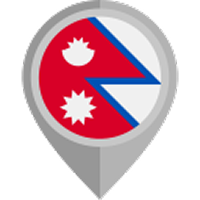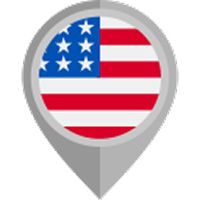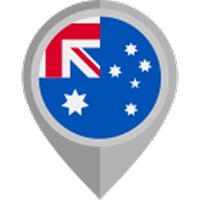Nepal vision | 09/09/2024
The Upper Mustang Trek has been an uprising destination for many trekkers. However, many may not know that it is a restricted zone.
Another name of the upper Mustang is the mini Tibet, thanks to its unique Tiebte culture wrapped in the region. Besides, the semi-desert landscape amidst the Dhalaugiri, Annapurna, and Nilgiri ranges just makes the view wholesome.
Moreover, the pilgrimage site of Padmasambhava stands as a site of Tibetan culture and customs. At the same time, the dramatic red cliffs in Dhakmar and Chhosar are known to be the places to enjoy the golden rays and striking views of sunrise and sunset.
The ancient artifacts and unique traditions are the primary reasons the government of Nepal restricted the place.
Let us take time to explore the reasons why Upper Mustang Trek is restricted and its impact on trekkers who want to access the trail.
Reasons That Make Upper Mustang Trek Restricted
The trail of ancient caves, vast plains, and clean blue river describes the Upper Mustang trek. There are many hidden gems in the region, along with some local people who have ancient cultures and traditions.
The place is restricted to preserve them. There are many other reasons; let’s look at them.
Closer Boarder to Tibet
Since the upper Mustang is the broader share of Nepal and Tibet, border security matters there. So, the Nepali government has to impose restrictions to maintain security and control over the region. The measure aims to prevent illegal activity and ensure the safety of locals and visitors.
Preserve Culture
The Upper Mustang Trek region is known for the ancient Tibetan people and their culture and customs. These have been prevalent in the region for over a century now, and the area's restriction helps to protect the cultural heritage.
As we limit access, the government aims to protect the local way of life and prevent the negative effect of mass tourism on historical sites.
Protect Environment
Aside from protecting the culture, the sensitive environment of the Upper Mustang requires proper preservation. The restriction enforces the permit system that helps to protect the area's natural beauty and ecological balance.
The permit's cost also ensures the development of the region and helps locals sustain themselves through tourism.
Archaeological Importance
There are numerous ancient caves and archeological sites of great historical value. The restored value helps to safeguard the sites from damage that can come from unregulated tourism. Furthermore, it ensures the preservation of these sites for a future generation.
Safety Regulation
Similarly, the landscape for the upper Mustang is challenging. Due to this, it requires experienced guides and adherence to safety regulations. The restriction helps to give trekkers proper support and guidance to enhance safety.

What permits are required for the Upper Mustang trek?
The restricted status of the Upper Mustang trek makes the permit for the area different from others. The fun fact is that the permit for the Upper Mustang region is quite expensive compared to most of the trekking routes in Nepal.
There are two permits required: Restricted Area Permit and Annapurna Conservation Area Permit.
These permits cost:
- ACAP: NPR 3,000
- Restricted Area Permit: $500 for the first 10 days and $50 for each extra 5 days
How much does it cost to go to the Upper Mustang?
As compared to the permit, the accommodation, permit, and guide cost a bit less in Upper Mustang Trek. In general, the upper Mustang trek costs around 1700-1900$, depending on the above factors. Let us break down the cost in detail.
Category | Details | Cost (USD) |
| Accommodation Costs | Teahouses and lodges during the trek | $30 - $45 per night |
| Hotels in Kathmandu and Pokhara | $50 - $60 per night | |
| Transportation Costs | Flight from Kathmandu to Pokhara (round trip) | $600 - $700 |
| Public bus from Kathmandu to Jomsom | $75 | |
| Private bus from Kathmandu to Jomsom | $250 | |
| Guide and Porter Costs | Guide | Around $30 per day |
| Porter | Around $25 per day |
Do you need a guide for the Upper Mustang?
Yes, the guide is mandatory for the Upper Mustang trek. Again, the restricted status plays a great role in the requirement of the guide. The trails of the Upper Mustang trek are hard to navigate for a solo person, so it is required for you to get help from a guide.
The guides are more like your friends and will help you deal with all the difficulties that arise during your trek. In the meantime, you can enjoy the allure of the trail and have a peaceful experience without any hassle.
Benefits of Hiring a Guide:
- The professional help will ensure that you have a safe and amazing trekking experience.
- Besides, you will have a partner to complete the trek and not feel lonely in the solitude of the trail.
- At the same time, you can get the expertise that helps you navigate the trail.
- In case of emergency, their help will provide the support needed to deal with such situations.
To wrap up, The restrictions on the Upper Mustang trek are essential steps taken by the government to deal with the region's unique cultural heritage and safeguard its delicate environment.
Despite this, the trek welcomes any trekkers and gives them a unique and rewarding experience. So, to have an amazing and safe trekking expertise, feel free to contact Nepal Vision Treks for expert guidance.
FAQS









